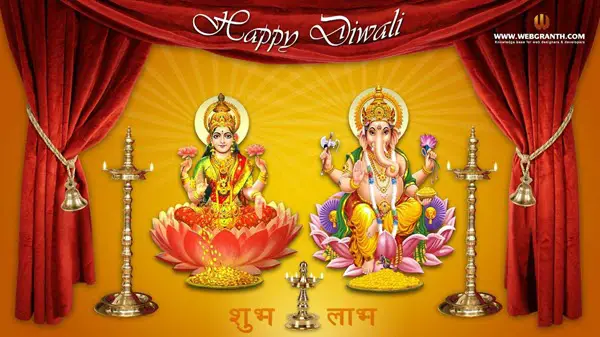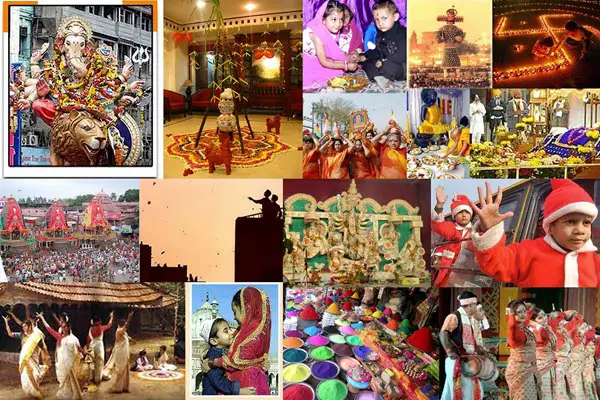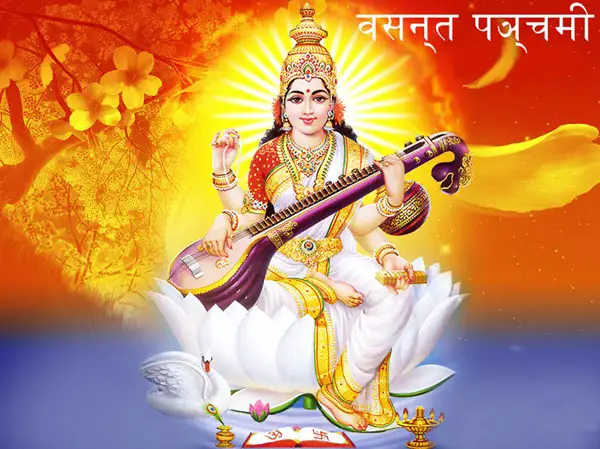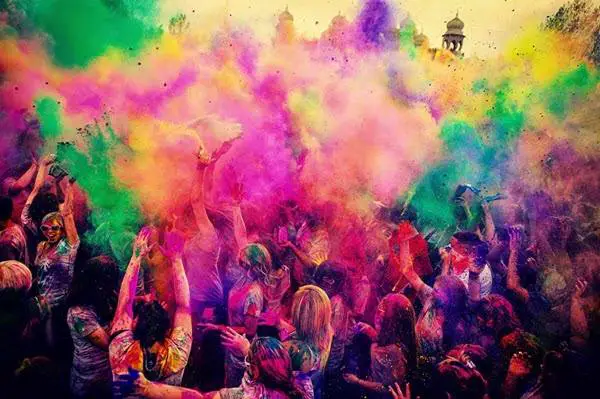Dussehra or Vijayadashami brings joy to every kid’s face. Watching Ramlila, Ravan Dahan, and fireworks makes everyone happy. Today, we will share all the details about Dushhehra, including Why Do We Celebrate Dussehra Festival and Dussehra Date, which will help you learn more about this amazing festival.
Life is a celebration.
In the Indian context, this is deeply realized in the form of numerous festivals celebrated throughout the country’s length and breadth.
Moreover, India has come to be known as the “Land of Festivals” and celebrations.
India has a rich tradition of festivals, which provide an opportunity to celebrate the varied colors of life.
Vijayadashami is a Hindu festival celebrated with great enthusiasm in different parts of India. Dussehra is also known as Vijayadashami.
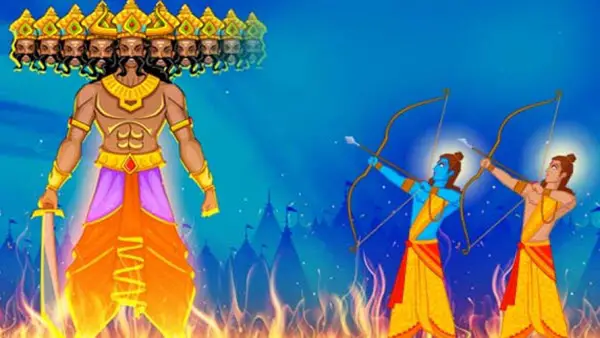
Image Credit: Travelplanet
Herein, you will come to know all about the Dussehra festival. So, if you want to know why and how Dussehra is celebrated, you have come to the right place.
The post will let you know at length about the significance of Dussehra. You also come to know how Dussehra is celebrated.
At the end of this post, we have included a section about when is Dussehra’s Date.
It’s a comprehensive post on Dussehra or Vijayadashami. So, stick in here as we take you through one of India’s most exciting festivals – Dussehra.
Table of Contents
Why is Dussehra Celebrated?
Dussehra, or Vijayadashami, is “The Day of Victory,” celebrating good’s victory over evil. It is the day when good vanquished evil.
Dussehra is also about the feminine goddess or the female divinity. Vijayadashami celebrates the Feminine Divinity, the “Cosmic Energy” that protects and sustains life on Earth.
Vijayadashami brings success and victory into our life. It is a cultural festival of great importance and significance for all Hindus.
Dussehra is the day that follows the nine days of Navratri.
After nine days of Navratri, the tenth and final day is Dussehra or Vijayadashami.
The nine days of Navratri represent the three fundamental qualities of human nature quantified as Tamas, Rajas, and Sattva.
Navratri festival’s first three days are tamas, where the Goddess takes an aggressive form, like Durga or Kali.
The next three days are related to Rajas, where the Goddess takes the gentle but materially oriented form, like Lakshmi.
The last three days are dedicated to Sattva, where the Goddess takes the form of Saraswati, representing knowledge and enlightenment.
If you invest in any of the three “Gunas” (Tamas, Rajas, or Sattva), you will power your life in a certain way.
However, if you go beyond these qualities, you will be liberated from the cycle of life and death.
After Navratri, the tenth and final day is celebrated as Dussehra or Vijayadashami.
It means that you have been successful in conquering all these three qualities.
You saw and participated in every one of them but didn’t invest in any of them.
You transcended and went beyond the usual three qualities. It essentially means that you have won these three essential qualities of life.
This is what Dussehra or Vijayadashami is all about. Vijayadashami is the Day of Victory.
It reminds us that reverence and gratitude toward life lead to success and victory. Vijayadashami shows us that leading a life of reverence finally leads to success and well-being. It spreads the message of the victory of good over evil.
As per the Hindu calendar, this spectacular festival of Vijayadashami is celebrated on the tenth day of Shukla Paksha in the month of Ashwin or Ashwayuja. This usually falls in September or October.
It culminates in the nine-day fasting period of Sharad Navratri. The festival of Navratri continues for nine days, and the tenth day is Dussehra.
Many Hindu festivals are related to Ramayana or Mahabharata’s great epics, and Dussehra is one of the main ones.
According to Ramayana, a great battle between Bhagwan Rama and the demon Ravana lasted for ten days.
On the tenth day of the battle, Ravana was killed by Lord Rama, which is celebrated as Dussehra. It personifies the triumph of virtue over immortality and spreads the message that good is always “Victorious.”
Ravana, who was the king of Lanka, was a cruel and evil ruler. He was a demon by birth who abducted Mata Sita, the beloved wife of Lord Rama. Mata Sita was imprisoned in Lanka by Ravana, who refused to release her despite repeated efforts by Lord Rama.
Finally, Lord Rama gathered a large army and went to Lanka to free Sita from the clutches of Ravana. He was assisted by Hanuman and Sugreeva, who provided Him with a formidable and powerful army.
There was a fierce battle between Lord Rama and Ravana, and finally, Ravana was killed at the hands of Lord Rama.
This ended the evil rule of Ravana, and Sita was freed from his bondage.
Another popular legend attributes the celebration of Dussehra to marking the victory of Goddess Durga over the Demon Mahishasura.
There was a fierce battle between Goddess Durga and the powerful Demon Mahishasura. The battle lasted for ten days, and on the tenth day, The Goddess killed Mahishasura and thus defeated the evil forces.
Significance of Vijayadashami
Dussehra, or Vijayadashami, is a trendy Hindu festival that commemorates the victory of good over evil.
It is the day when Lord Rama overpowered and killed the ten-headed demon king Ravana, who had abducted Sita Mata (Rama’s wife) and held her captive in Lanka.
An epic war commenced between Lord Rama and Ravana to rescue Sita from the bondage of demon king Ravana.
The war went on for ten days and culminated on the Dashmi Tithi when Rama overpowered and killed Ravana.
It was a glorious victory of good over evil. Dussehra also signifies the homecoming of Rama, Lakshman, and Sita.
Different Legends of Dussehra
All the legends associated with Dussehra bring out one astonishing fact. They inspire us to side with the good and overpower the evil forces.
One of the legends of Dussehra relates to the Goddess Durga.
Goddess Durga overpowered and killed Mahisasura and his demons. All the Gods offered their massive powers to Goddess Durga for killing Mahisasura.
It was a fierce battle that lasted for nine nights, and on the tenth day (Vijayadashami), Goddess Durga emerged victorious, killing Mahisasura.
Dussehra is also closely related to the legendary tale of Lord Rama winning his beloved wife, Sita, from the clutches of the demon king of Lanka, Ravana.
As per Hindu mythology, Shoorpnakha, the sister of Ravana, fell in love with Lord Rama and his younger brother Lakshmana. She wanted to marry any one of them. However, Rama, as well as Lakshman, refused to marry Shoorpnakha.
Shoorpnakha was infuriated and threatened to kill Sita. Lakshmana was much grieved, and he cut her ears and nose in anger.
When Shoorpnakha told her plight to Ravana, he decided to take revenge.
Ravana abducted Sita to take revenge for her sister. Rama and Lakshmana fought a battle with Ravana.
They were helped by Hanuman and an army of monkeys led by Sugriva. Eventually, Rama overpowered and killed Ravana and freed Sita from his clutches.
According to another legend, Lord Rama had performed the “Chandi Homa” to invoke Goddess Durga’s blessings.
It is believed that the Goddess provided Him with the secret knowledge of the way of killing Ravana. It was a fierce battle between Rama and Ravana. At last, Rama defeated and killed Ravana. It was on Vijaya Dashami that we now celebrated Dussehra.
According to Hindu traditions, Dussehra is the auspicious day to begin formal learning. Goddess Saraswati is worshiped on this day. Students keep their books before the Goddess on the ninth day of Navratri. They perform puja on the tenth day (Vijayadashami) and then return their books.
A fascinating legend related to Dussehra states the Pandavas returned to their kingdom after serving an extraneous exile to rule their subjects righteously.
So, Vijayadashami is all about celebrating the good and defeat of the evil forces.
Dussehra also marks the beginning of new ventures such as business or any work. Dussehra is an enriching occasion celebrating all that is good and pious.
How is Dussehra Celebrated?
Dussehra is one of the biggest Hindu Festivals. It is celebrated with tremendous enthusiasm throughout India. The ways and traditions of celebrating Dussehra may vary in different parts of India, but its central theme is the same.
The Vijayadashami celebration is filled with enthusiasm, pomp, show, and glamour. Yes, the festival of Vijayadashami offers a unique opportunity for every Indian to immerse himself in the mood of festivity and celebration. It fills his life with happiness, hope, and energy.
Here is how Dussehra is celebrated in different parts of India.
Vijayadashami Celebration in North India
Ramlila is the main highlight of the celebration of Dussehra in the northern part of India, where scenes of Ramayana are enacted to showcase the different Lilas (phases of life) of Lord Rama.
Scenes of Ram’s going fourteen years of exile are enacted, Bharat Milap, where Rama meets his brother Bharat, Sita Haran (the kidnapping of Sita by Ravana), the destruction of Ravana, the return of Rama, Lakshmana, and Sita to Ayodhya after their fourteen years of exile, all are enacted and showcased in Ramlila.
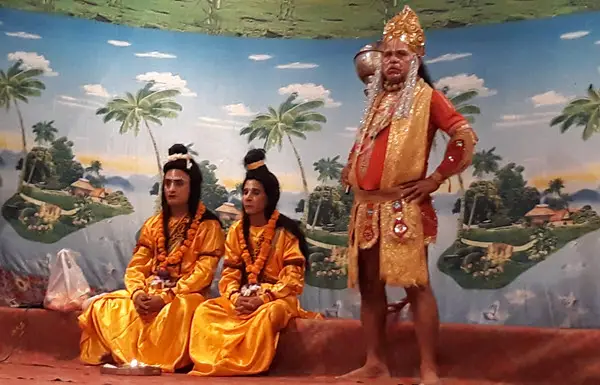
In the Kulu Valley of Himachal Pradesh, grand processions are organized where village folks gather in large numbers.
The huge procession consists of over a hundred deities mounted on the colorful palanquins. Ramlila is also performed in Kulu Dussehra.
In Delhi and other northern states, huge effigies of Ravana, Meghnath, and Kumbhkaran are burnt on huge grounds organized by different city committees.
Dussehra celebration in South India
Dussehra is a major South India festival celebrated with great enthusiasm, joy, and happiness. The nine days preceding Dussehra have been equally divided to worship Goddess Durga’s three forms: Kaali, Lakshmi, and Saraswati.
Small idols known as ‘Bommai Kolu’ are placed on artificial steps and decorated beautifully with flowers, lamps, and ornaments.
On the day of Vijayadashami, Bommai Kolu is taken down ceremoniously in a huge procession.
Saraswati Puja is performed, and the day is considered very auspicious for beginning education, “Vidya Aarambh.”
The gala procession is organized in Mysore, where richly bedecked elephants are taken down the city’s brightly lit streets. Effigies of Ravana, Meghnath, and Kumbhkaran are burnt. The Mysore Palace is illuminated during the festive season of Dussehra.
Dussehra Celebration in East India
In the Eastern States of India, particularly West Bengal, Dussehra is celebrated as Goddess Durga’s victory over the demon Mahishasura.
It marks the last day of the ten-day-long festival of Durga Pooja.
On the day of Vijayadashami, Maa Durga’s idols are ceremoniously immersed in the nearby river or lake by the devotees. This is known as ‘Visarjan.’ In Orissa, people also burn the effigies of Ravana.
Vijayadashami Celebration in Western India
Vijayadashami is celebrated with great fun and fervor in western India.
Idols of Goddess Durga are immersed in water following a grand procession. People visit their friends and relatives and exchange sweets.

The Aapta tree is worshiped, and its leaves are exchanged, which is considered an auspicious symbol. People start a new venture on this auspicious day. People decorate their homes with colorful Rangoli, and women dress up in their best attires.
Devotional songs are sung, regional dances are performed, and the festivity continues the whole night of Dussehra.
Dussehra Rituals and Traditions
Different traditions and rituals are followed for the Dussehra festival throughout the country.
Here, you get a glimpse at some of them.
Dussehra in Bengal, Tripura, and Orissa
The Vijayadashami festivities take Durga Puja’s form in the state of Bengal, Orissa, and Tripura. In these states, Dussehra celebrations are not tied with the epic tale of Ramayana.
They celebrate the victory of Goddess Durga over demon king Mahisasura.
It’s a five-day-long extravaganza.
The celebrations begin with Shashti (the 6th day of Navratri) and continue to the tenth day culminating in Dussehra or Vijayadashami.
Pandals are set up that host various cultural activities such as singing, dancing, poetry recitation, and even painting competitions. You can also find “Stalls” where people buy new clothes and other gift items.
The idol of Goddess Durga is installed in these pandals. Bhog or Prasadam is prepared and distributed among devotees.
On the tenth day, people bid a tearful goodbye to the idol of Goddess Durga.
Various rituals are performed, such as Sindoor Daan. Devotees gather one last time again and wish each other ‘Shubho Bijoya.’
Dusshera Celebrations in Gujarat
The Dussehra festivities start with the Navratri celebrations in the state of Gujarat.
Navratri is the most popular festival in Gujarat, which is celebrated with great enthusiasm. The Navratri celebrations are marked with fasting (throughout the day) and puja ceremonies.
In the evening, men and women adorn vibrant clothes and play Garba and Dandiya (Gujarati folk dance). The last few days of Navratri are filled with singing and dancing.
Several devotees visit temples such as Goddess Ashapura Mata, Ambaji Temple, and Chamunda Mata Temple.
Mysore Dussehra
Mysore Dussehra has the status of being the most spectacular Dussehra celebration in the country.
Here, the Vijayadashami celebrations are interspersed with ritualistic ceremonies. You get to witness the royal heritage of Mysore in all its glory.
Dussehra’s celebration span over ten days. The city honors Goddess Chamundeshwari.
The Mysore palace is beautifully illuminated. It is decorated with 100,000 light bulbs lit from 7 p.m. to 10 p.m. each day of the festival.

Various cultural and religious programs are held in front of the palace.
The festivities culminate with a procession that is taken through the streets. The idol of Goddess Chamundeshwari is taken atop an elephant adorned with gold and lavish accessories.
The procession is taken from the historical Mysore Palace to the Banni Mantapa. A torchlight parade is also taken on the outskirts of the city.
The festivities continue until late in the evening.
The Spectacular Ramlila
Dussehra is celebrated with great enthusiasm in the northern part of the country.
The festivities begin with Sharad Navratri. People do fasting and perform puja ceremonies to please their beloved deity.
On the eighth or the ninth day of Navratri, “Kanya” puja is performed wherein nine girls are worshiped and fed with Prasadam special-prepared for them. They are usually offered halwa, Poori, and chole.
“Bhandaras” is also organized in honor of Goddess Durga.
Ram Lila, which enacts the epic tale of Ramayan excitingly, is performed in cities, villages, and towns.
On Dussehra, the effigies of Ravana, Kumbhakarna, and Meghanatha are burnt, symbolizing the victory of good over evil.
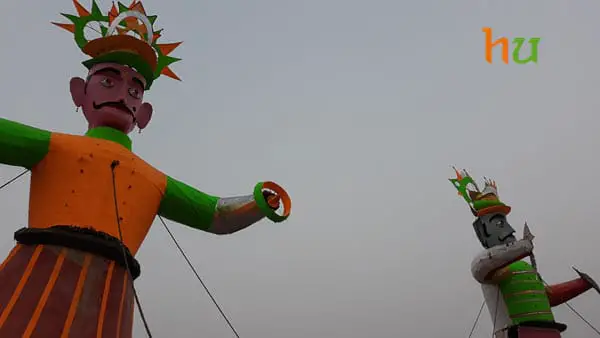
When is Dussehra 2025?
Dussehra, or Vijayadashami, is one of the major Hindu Festivals. It is celebrated with great joy, enthusiasm, and reverence throughout India.
Vijayadashami symbolizes the Victory of Good over Evil. According to popular Hindu legend, it was on this day that Lord Rama killed the demon Ravana.
Vijayadashami is also celebrated to mark the triumph of Mother Goddess Durga over the demon Mahishasura. On this day, Goddess Durga killed the demon Mahishasura and freed the Universe from evil forces.
It is celebrated as ‘The Day of Victory’ when good vanquishes evil.
According to the Hindu calendar, the festival of Vijayadashami is celebrated on the 10th Day of the bright half (Shukla Paksha) of the month of Ashwin (Ashwayuja).
This usually falls in September or October. It marks the end of the Sharad Navratri festival. The Navratri festival continues for nine days, and the tenth day is Dussehra.
Dussehra is celebrated with great reverence and devotion. There is an atmosphere of festivity all around; people observe special prayer meetings throughout India. Outdoor fairs are organized, and processions are taken out where people gather in large numbers.
There is also the tradition of burning large effigies of Ravana, Meghnath, and Kumbhkaran. Moreover, idols of Goddess Durga are immersed in water on this day.
Local festive events impart a special and unique dimension to this spectacular festival of Dussehra. Ramlila performances are held where different episodes of the great epic Ramayana are enacted. Temples are decorated, and cities and towns are brightly lit on the occasion of Vijayadashami.
People start the new venture on this day. They exchange gifts and visit friends’ and relatives’ places. These are some of the many extravaganzas that are witnessed on this day.
Shami Puja, Aparajita Puja, and Seema Avalanghan are some of the rituals followed on the day of Dussehra. According to the Hindu division of the day, these rituals should be performed during Aparahna time.
You may like: Dussehra Wallpapers
Dussehra Date 2025
Dussehra will be celebrated on 2nd October 2025, Thursday
Vijayadashami/Dussehra Puja Time:
Vijay Muhurat = 02:09 PM to 02:56 PM
Aparahna Puja Time = 01:21 PM to 03:44 PM
So, Dussehra, or Vijayadashami, is a vibrant festival celebrated with great vigor and enthusiasm throughout India.
It has a tremendous cultural significance that crosses the barriers of caste, creed, or religion.
It symbolizes the victory of good over evil and instills new hope, energy, and courage to lead our lives righteously.
!! We Wish You a Happy Dussehra !!

